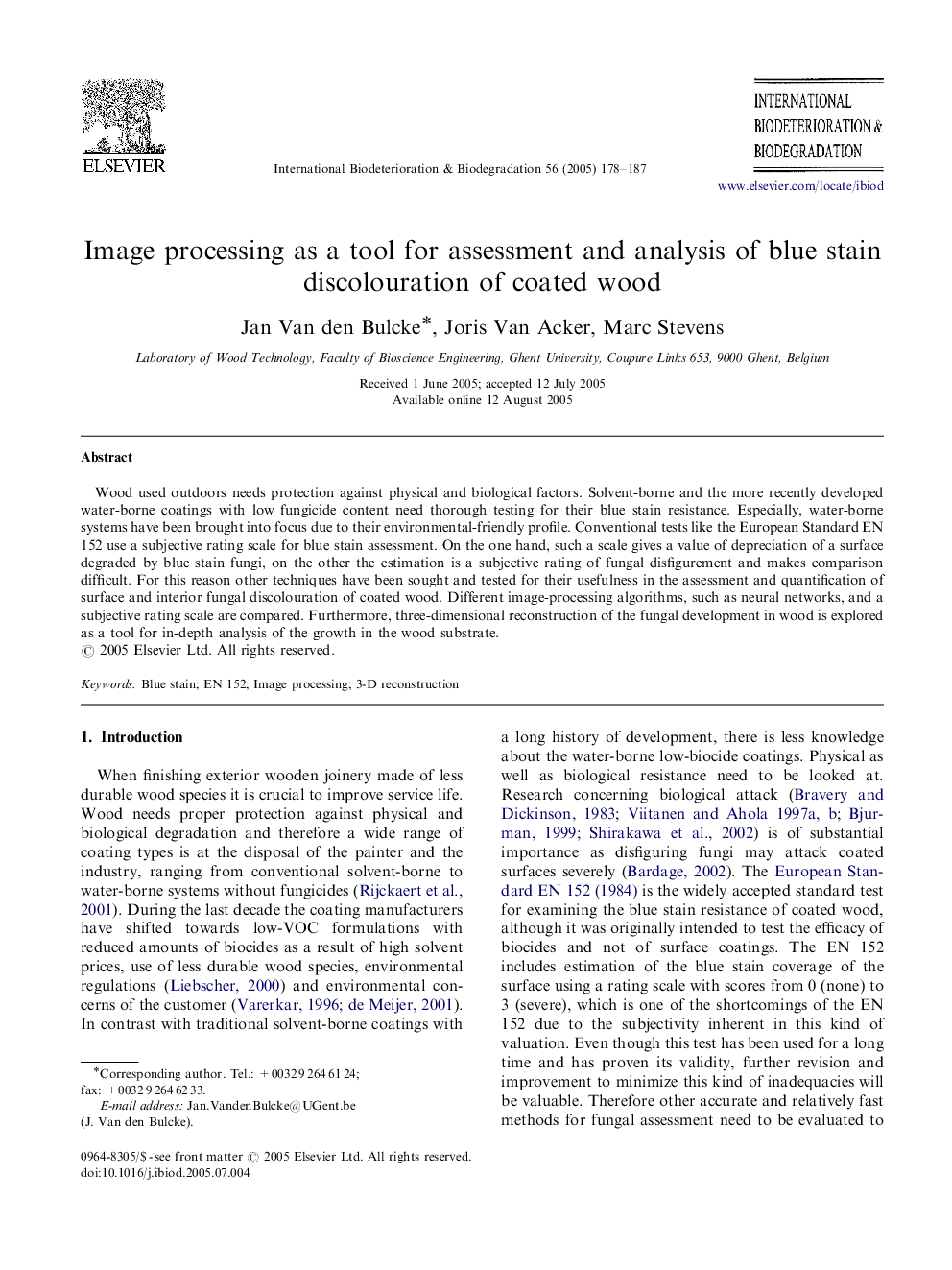| Article ID | Journal | Published Year | Pages | File Type |
|---|---|---|---|---|
| 9442246 | International Biodeterioration & Biodegradation | 2005 | 10 Pages |
Abstract
Wood used outdoors needs protection against physical and biological factors. Solvent-borne and the more recently developed water-borne coatings with low fungicide content need thorough testing for their blue stain resistance. Especially, water-borne systems have been brought into focus due to their environmental-friendly profile. Conventional tests like the European Standard EN 152 use a subjective rating scale for blue stain assessment. On the one hand, such a scale gives a value of depreciation of a surface degraded by blue stain fungi, on the other the estimation is a subjective rating of fungal disfigurement and makes comparison difficult. For this reason other techniques have been sought and tested for their usefulness in the assessment and quantification of surface and interior fungal discolouration of coated wood. Different image-processing algorithms, such as neural networks, and a subjective rating scale are compared. Furthermore, three-dimensional reconstruction of the fungal development in wood is explored as a tool for in-depth analysis of the growth in the wood substrate.
Related Topics
Life Sciences
Environmental Science
Environmental Science (General)
Authors
Jan Van den Bulcke, Joris Van Acker, Marc Stevens,
